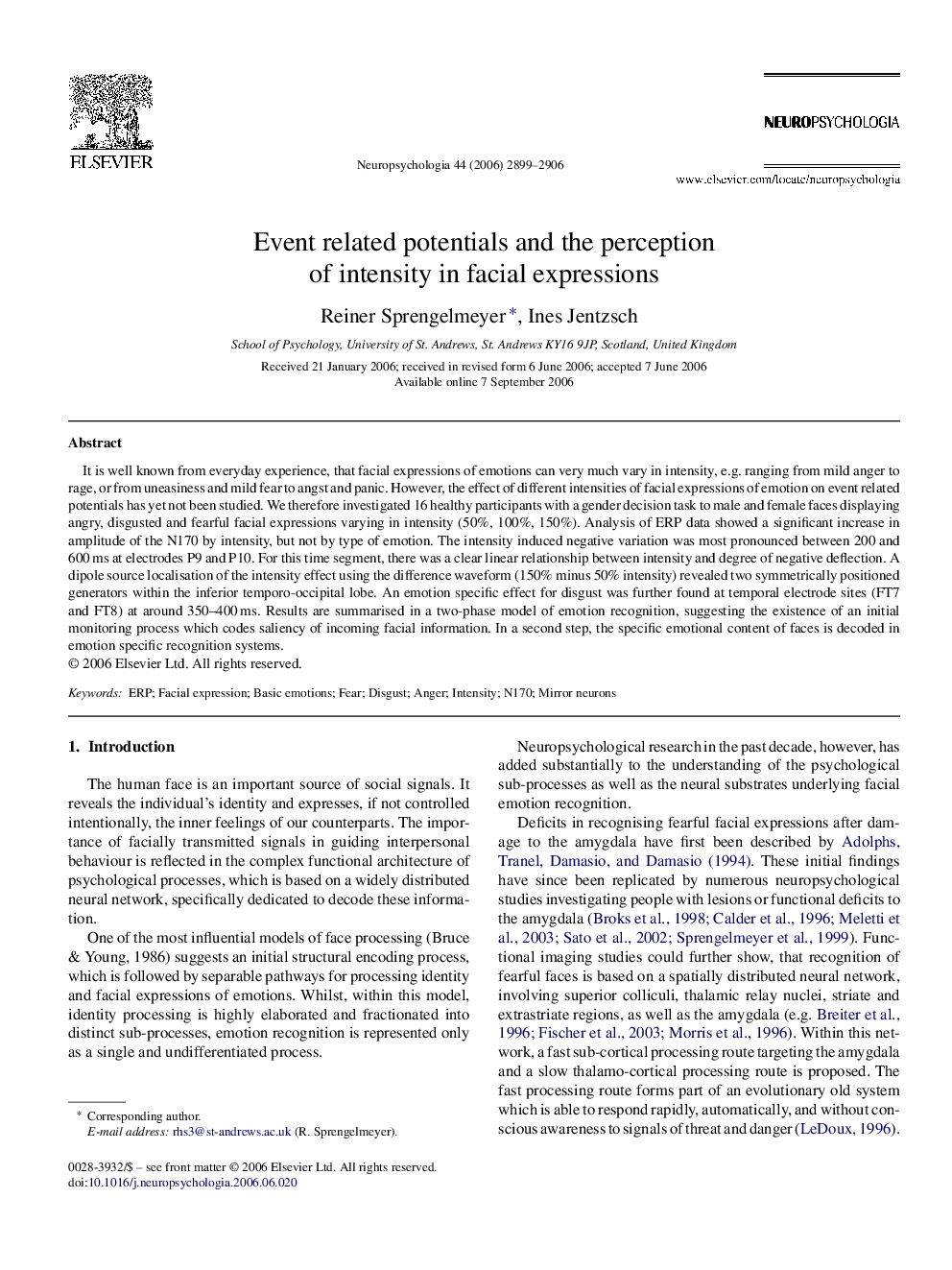| Article ID | Journal | Published Year | Pages | File Type |
|---|---|---|---|---|
| 945863 | Neuropsychologia | 2006 | 8 Pages |
It is well known from everyday experience, that facial expressions of emotions can very much vary in intensity, e.g. ranging from mild anger to rage, or from uneasiness and mild fear to angst and panic. However, the effect of different intensities of facial expressions of emotion on event related potentials has yet not been studied. We therefore investigated 16 healthy participants with a gender decision task to male and female faces displaying angry, disgusted and fearful facial expressions varying in intensity (50%, 100%, 150%). Analysis of ERP data showed a significant increase in amplitude of the N170 by intensity, but not by type of emotion. The intensity induced negative variation was most pronounced between 200 and 600 ms at electrodes P9 and P10. For this time segment, there was a clear linear relationship between intensity and degree of negative deflection. A dipole source localisation of the intensity effect using the difference waveform (150% minus 50% intensity) revealed two symmetrically positioned generators within the inferior temporo-occipital lobe. An emotion specific effect for disgust was further found at temporal electrode sites (FT7 and FT8) at around 350–400 ms. Results are summarised in a two-phase model of emotion recognition, suggesting the existence of an initial monitoring process which codes saliency of incoming facial information. In a second step, the specific emotional content of faces is decoded in emotion specific recognition systems.
